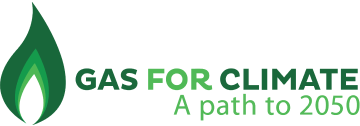Commission announces groundbreaking biomethane target: ‘REPowerEU to cut dependence on Russian gas’
Today, the European Commission announced a target for the production of 35 billion cubic metres (bcm) of biomethane within the EU by 2030 as part of its REPowerEU plan. The biomethane value chain welcomes this target, which is a historic step forward and shows EU leadership. The target will replace 20% of natural gas imports […]
Register now! Join Gas for Climate at our virtual COP 26 side event
Friday, the 5th of November, 10-11 GMT (11-12 CET), the Gas for Climate consortium will host a virtual COP 26 Side Event – The Market State of Biomethane and Hydrogen – Providing Insights. The Gas for Climate consortium will shed light on the most recent market developments along the value chain of biomethane and hydrogen, […]
Gas for Climate study recommends sequental crops be included in REDII Annex IX
Today, the Gas for Climate consortium publishes a paper which shows that silage crops grown in a sequential cropping system, as cultivated in Europe, meet the evaluation criteria for ‘advanced feedstock’ as included in Annex IX of the REDII. Being included in Annex IX would make the feedstock eligible to be double counted towards renewable […]
Gas for Climate fully supports the increased EU’s 2030 emission reduction target of 55%, consortium members are ready to play their part – An Interview with Marie-Claire Aoun, chair of Gas for Climate
“With the EU reaching a historical deal this week on increasing the EU’s 2030 emissions reductions target from 40% to at least 55% and transforming the EU 2050 climate neutrality promise into a binding obligation, a significant step in accelerating the energy transition has been made”, says Marie-Claire Aoun, chair of Gas for Climate and […]
Proposed revision of the TEN-E regulation: Gas for Climate is ready to take on the challenge
Gas for Climate values the opportunity in TEN-E for the creation of a dedicated hydrogen infrastructure and proposes to speed up the repurposing of existing gas pipelines to achieve the 2030 and 2050 EU climate targets. Gas for Climate welcomes the newly created smart gas grids category, enabling the integration of renewable and low-carbon gases. […]
New gas for climate policy paper calls for a binding target for 11% renewable gas by 2030
Gas for Climate advocates in new policy paper, that by 2030, 11% of all gas consumed in the EU should be renewable gas, The envisioned binding target is supported by two sub-targets for 8% sustainable biomethane and 3% renewable hydrogen. The target should be introduced in the EU Renewable Energy Directive, Gas for Climate continues […]
New report provides unique overview on latest developments in renewable and low-carbon gases. Industry is ready for scale-up.
New Gas for Climate report shows market overviews and trends related to the scale-up of biomethane and green and blue hydrogen in Europe. Biomethane is scaling up rapidly at decreasing costs. A wave of blue and green hydrogen projects is expected within the coming years. 15% growth in grid-transported biomethane in 2018 alone, with now […]
New Gas for Climate Market State and Trends report – Join the webinar on the 16th of December
Gas for Climate is delighted to present to you our first market state and trends report on renewable and low-carbon gases in Europe – a first-of-a-kind comprehensive overview of current developments across the biomethane and green and blue hydrogen supply chains in the light of the 2030 decarbonisation pathway. The report will launch on the […]
10% binding target for renewable gas and future-proof gas infrastructure crucial to achieve cost efficient decarbonisation
New study describes gas decarbonisation pathways from 2020 to 2050 and identifies the required investments to scale-up hydrogen and biomethane. Large scale production of biomethane and green and blue hydrogen – transported, stored and distributed through existing gas infrastructure – can help achieve 55% emission reduction by 2030 in a smart combination with renewable electricity. […]
Gas for Climate hosts Industry Workshop on the 21st of February
On the 21st of February the Gas for Climate consortium will organize a workshop in Brussels to discuss the draft findings of our new study, by Navigant ‘a Guidehouse company’, with a range of industry stakeholders. The new study describes Pathway scenarios to scale up the deployment of biomethane and hydrogen in industry, electricity production, […]

